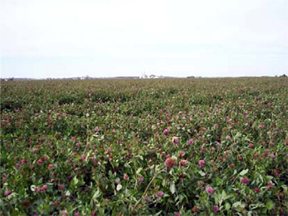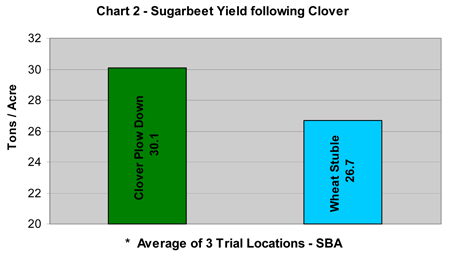Clover cover crops in wheat/sugarbeet rotations reduce disease, increase yields
Frost seeding red clover into wheat will not harm the wheat and will improve the following sugarbeet yield and quality.
Sugarbeet growers are highly encouraged to incorporate frost seeded clover into their wheat this spring because it is a relatively easy and cost effective way to improve the following sugarbeet crop. The clover cover crop can reduce diseases and supply additional N, resulting in improved beet yields.
Red clover (Picture 1) is Michigan’s most common cover crop. It is normally frost seeded into wheat in March. Michigan mammoth and June clover (also known as medium red clover) have been shown to perform better than other red clovers frost seeded into well fertilized wheat. The seeding rate should be between 10-12 pounds per acre and can be applied with fertilizer if thoroughly blended and applied evenly. Many clover growers prefer to apply clover with a small spreader and a utility vehicle that allows them to spread seed on soft soils. Clover is a proven soil builder and can supply 60-80 pounds of nitrogen to the following crop. Research conducted at the MSU Bean and Beet Research Farm has shown positive crop yield response lasting more than one year. Sugarbeet Advancement research has also shown an improvement in beet yield similar to oilseed radish in fields with known sugarbeet cyst nematodes (See chart 2).
Clover should be incorporated into the soil by either mold board or chisel plowing late in the fall when soil temperatures are below 50 degrees. This will reduce nitrogen loss from microbial break down. A glyphosate application may be desired to improve control if chisel plowing.
Clover cover crops also have many benefits including improved soil quality, increased organic matter, more nitrogen, better erosion control, and improved soil structure and drainage.



 Print
Print Email
Email


